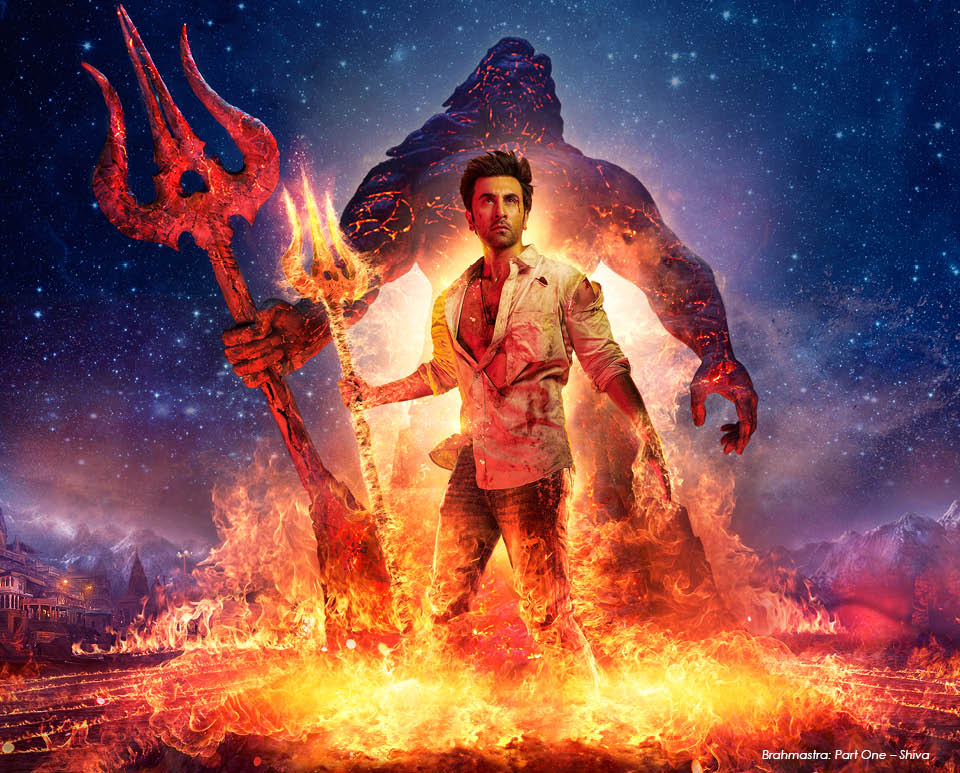
Indian cinema has always struggled with two things – creating a franchise and using Indian mythology to create big cinema. "Brahmastra" is a giant step forward on both fronts. Vanita Kohli-Khandekar spoke to the film’s director, Ayan Mukerji, about bold dreams and forging new paths.
Indian director Ayan Mukerji’s "Brahmastra: Part One – Shiva" grossed about US$53 million at the global box-office, making the story of Shiva’s fight against evil forces the biggest Hindi hit of 2022. Starring Ranbir Kapoor as Shiva, the film centres around control of the ultimate weapon – the Brahmastra (a blend of the Hindi word astra, which means weapon, and Brahma, the creator in Hindu mythology).
The story is the first of a trilogy that has taken Mukerji, now 39, almost 10 years to create. The “Astraverse”, as he calls it, is an alternate universe where the good guys are armed with natural forces like water, fire, wind or creatures such as monkeys or bulls thanks to some stunning visual effects from Indian VFX specialists, Prime Focus.
Mukerji says he started thinking about Brahmastra even before shooting his 2013 romance, "Yeh Jawaani Hai Deewani", describing the film as “the beginning of this journey on the path where modern spirituality meets fantasy”.
“I am a lover of fantasy, that kind of storytelling really tickles my mind. Some of the divine power in our literature is deeper in me. I think Shiva is the greatest thing in the universe. I started off wanting to make a film that excited and entertained people, like "Lord of the Rings"; it is the best ever (fantasy fiction) created. That journey led me into drawing and creating my fantasy from a deeply Indian childhood, history, spiritual, culture, space. That is the dream I am chasing and am still chasing it,” he says.
From the start, he knew the idea would best be expressed using technology. The VFX, he says, “began on paper at the same time as the story, screenplay and character” and moved into high gear during pre-production.
He describes the shift from regular feature films into high-cost VFX-laden features as a “transformative process”.
“I found a much deeper commitment...
Indian cinema has always struggled with two things – creating a franchise and using Indian mythology to create big cinema. "Brahmastra" is a giant step forward on both fronts. Vanita Kohli-Khandekar spoke to the film’s director, Ayan Mukerji, about bold dreams and forging new paths.
Indian director Ayan Mukerji’s "Brahmastra: Part One – Shiva" grossed about US$53 million at the global box-office, making the story of Shiva’s fight against evil forces the biggest Hindi hit of 2022. Starring Ranbir Kapoor as Shiva, the film centres around control of the ultimate weapon – the Brahmastra (a blend of the Hindi word astra, which means weapon, and Brahma, the creator in Hindu mythology).
The story is the first of a trilogy that has taken Mukerji, now 39, almost 10 years to create. The “Astraverse”, as he calls it, is an alternate universe where the good guys are armed with natural forces like water, fire, wind or creatures such as monkeys or bulls thanks to some stunning visual effects from Indian VFX specialists, Prime Focus.
Mukerji says he started thinking about Brahmastra even before shooting his 2013 romance, "Yeh Jawaani Hai Deewani", describing the film as “the beginning of this journey on the path where modern spirituality meets fantasy”.
“I am a lover of fantasy, that kind of storytelling really tickles my mind. Some of the divine power in our literature is deeper in me. I think Shiva is the greatest thing in the universe. I started off wanting to make a film that excited and entertained people, like "Lord of the Rings"; it is the best ever (fantasy fiction) created. That journey led me into drawing and creating my fantasy from a deeply Indian childhood, history, spiritual, culture, space. That is the dream I am chasing and am still chasing it,” he says.
From the start, he knew the idea would best be expressed using technology. The VFX, he says, “began on paper at the same time as the story, screenplay and character” and moved into high gear during pre-production.
He describes the shift from regular feature films into high-cost VFX-laden features as a “transformative process”.
“I found a much deeper commitment and went deeper into my philosophy as an artist, unleashed my imagination. I moved from thinking of myself as a storyteller and developed an entrepreneurship with this. I wanted to make a film that all the 1.3 billion people in India will watch and enjoy,” he says.
"Brahmastra" trilogy’s budget is estimated at US$50 million – a fraction of the US$715 million Amazon Prime Video spent on its "Lord of the Rings: Rings of Power" – but still a sizeable sum in India.
How easy was it to raise the funding? Mukerji says the film’s partners (Disney’s Star Studios, Prime Focus, Dharma Productions, Starlight Productions) “knew that not only were we building a trilogy but we were building the foundation of a universe of cinema, which we call the Astraverse. It would have multiple storylines and could become this wonderful youth technology brand for our country”.
Others, like Krrish (2003, 2006, 2013) have attempted to build scalable India-led franchises. "Brahmastra" may well be the first, with a film for each “astra”. Mukerji says this is part of the game plan. “Two years ago we were not thinking only of the Brahmastra trilogy. While shooting Vanarastra (monkey weapon), I was thinking of the Vanarastra movie and what it would look like.”
Does the 2022 success impact how he thinks of Dev (part two) or part three? “All feedback will be considered,” he says. His target for the release of part two is around Diwali in October 2025 and end-2026 for part three.
By then, he will be 50 years old and would have lived with the trilogy for more than a decade. Does he see a time when he will be free of the project?
“I may never be free,” he says. “I became comfortable with that... If we need to build something really amazing in India and the roadmap for it doesn’t exist, how can I do it if I also want to do everything else? I have to commit. There will be other filmmakers who will make the "Yeh Jawaani Hai Deewani" kind of films.”
Mukerji says developing "Brahmastra’s" VFX was “so difficult. We were trying to make visual effects that have only been achieved in the Western world, priced at Western rates and pegged to Western box-office. Our budget was in Indian rupees. Figuring that out was part one of Brahmastra.”
The VFX was done with the help of Namit Malhotra (co-founder Prime Focus & CEO of DneG). “It took me time to find them and select them and for them to select me, and for us to form this partnership,” Mukerji says. “They met me halfway and I met them halfway. Which is how Namit became a producer on the film. It was his entrepreneurial spirit and vision for cinema in India meeting with my vision for the Astraverse and us agreeing that let’s do this.”
He also pays tribute to the icons that have gone before him and paved the way. “What Shah Rukh Khan did with "Ra One" (2011) years ago was the first stepping stone for "Brahmastra". "Krrish" and Rajamouli’s "Bahubali" (2015, 2017) also paved the way. We are now at the top of the food chain in Indian cinema on visual effects.”



















